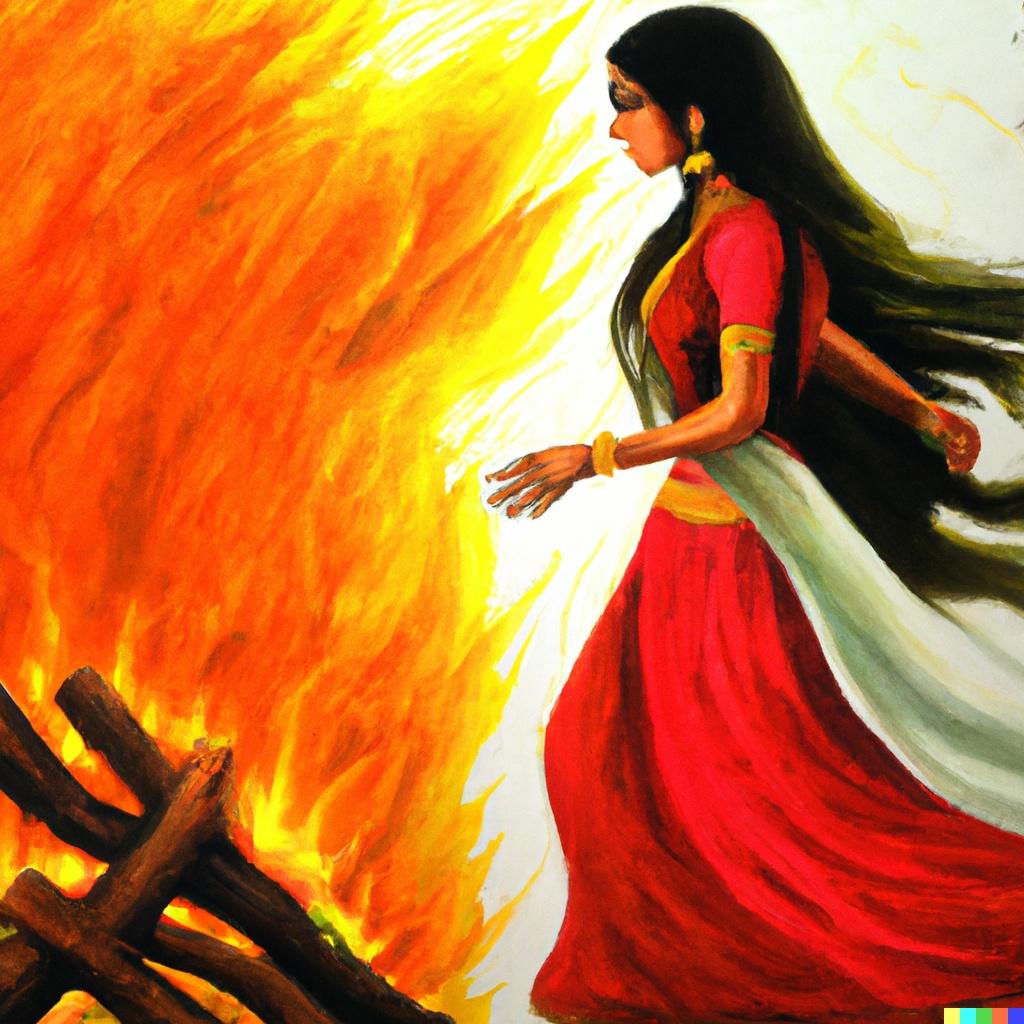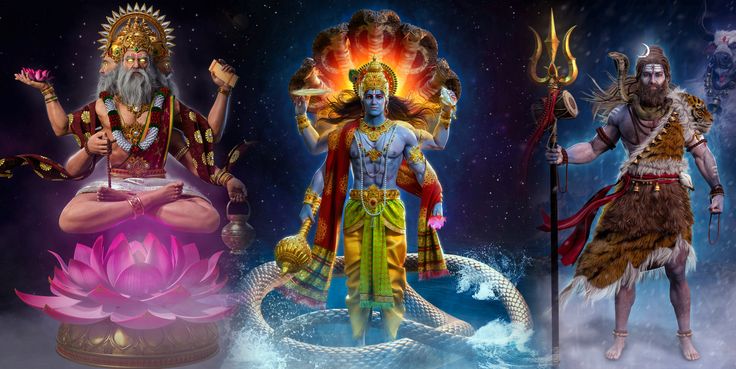Mata Sita is one of the most revered and celebrated figures in Hindu mythology, embodying the highest ideals of womanhood, devotion, and resilience. Her life story, chronicled in the Ramayana, remains a timeless saga of strength, sacrifice, and integrity. Sita is often hailed as the ideal daughter, wife, and mother, but her life is also a profound lesson on enduring adversity with grace, fighting for dignity, and making difficult choices that stand as a testament to her unshakable moral principles.
Birth and Divine Origin
Mata Sita’s origins are believed to be divine. According to the Ramayana, she was not born in the traditional sense but was found by King Janaka of Mithila in a furrow while he was ploughing the field during a sacred yagna (ritual). Sita is therefore often referred to as the “daughter of the Earth” (Bhumi Putri). The earth goddess, Bhumi Devi, is considered her mother, which imbued her with the qualities of strength, patience, and enduring grace.
From an early age, Sita displayed virtues that set her apart. Raised in the palace of Mithila as the beloved daughter of King Janaka and Queen Sunaina, she grew up learning the values of righteousness, modesty, and devotion. It is said that even as a young girl, her beauty was as captivating as her strength of character, marking her for a future that would shape the course of history.

Swayamvara and Marriage to Lord Rama
Sita’s marriage is one of the key events in her life that reflects her divine purpose. As she grew older, her father Janaka, keen on finding a suitable husband for his daughter, arranged a swayamvara—a ceremony where a bride chooses her groom from among a group of suitors. However, this was no ordinary swayamvara. The challenge posed by King Janaka was to string the mighty bow of Lord Shiva, a feat that only the most powerful man could accomplish.
Many princes and kings from across Bharat (ancient India) came to Mithila, all eager to win the hand of the beautiful princess, but none were able to even lift the bow, let alone string it. Finally, Prince Rama of Ayodhya, the eldest son of King Dasharatha, stepped forward. With divine grace, he not only lifted but also broke the bow of Shiva while attempting to string it, signalling his extraordinary strength and righteousness.
This marked the beginning of the eternal bond between Sita and Rama, a relationship based on mutual respect, love, and shared virtues. Their marriage symbolized the ideal partnership, where both husband and wife are equally devoted to each other and to the greater cause of dharma (righteousness). Sita’s loyalty and devotion to Rama were unwavering, and her decision to follow him at every step of his life, even into hardship, reflected the depth of her love and commitment.

The Exile: Choosing Dharma over Comfort
Shortly after their marriage, an unforeseen turn of events led to Lord Rama’s exile. Due to palace intrigue, where Queen Kaikeyi, Rama’s stepmother, demanded that her son Bharata be crowned king and that Rama be banished for fourteen years, Rama had to leave the kingdom of Ayodhya. Despite having no role in these events, Sita made the courageous decision to accompany her husband into the forest.
For Sita, it wasn’t a matter of personal comfort or luxury; it was her duty as a wife to stand by her husband through all circumstances. Leaving behind the comforts of the royal palace, she chose to endure the hardships of forest life without hesitation, marking the beginning of a long journey that would test her strength and resolve.
During their years of exile, Sita, along with Rama and his brother Lakshmana, wandered through the forests, living a life of simplicity and austerity. Despite the challenges of forest life, Sita maintained her dignity and grace, continuing to fulfil her role as a devoted wife. She created a nurturing environment in the wilderness, embodying patience, love, and resilience.

The Abduction by Ravana
The turning point in Sita’s life came when Ravana, the demon king of Lanka, abducted her. One day, while Rama and Lakshmana were away, Ravana, disguised as a mendicant, lured Sita out of the protective circle drawn by Lakshmana. Taking advantage of her compassion and generosity, Ravana kidnapped her and took her to his kingdom in Lanka.
Sita’s abduction was not just an act of violence but a profound violation of her dignity. Despite being imprisoned in Ravana’s Ashok Vatika, she remained resolute in her faith in Lord Rama and steadfast in her devotion. Ravana tried every means to sway her—through threats, temptations, and even flattery—but Sita’s unwavering commitment to righteousness and her unshakable belief in Rama shielded her from succumbing to despair. Her refusal to submit to Ravana, despite being held captive for months, demonstrated her extraordinary inner strength and purity.
This period of captivity represents Sita’s immense mental and spiritual fortitude. While her physical freedom was constrained, her mind and soul remained free and devoted to her principles. She patiently waited for Lord Rama, confident that he would come to rescue her, and throughout this time, she maintained her unwavering moral stance, symbolizing endurance in the face of evil.

The Agni Pariksha (Trial by Fire)
When Lord Rama finally defeated Ravana and rescued Sita, her trials were far from over. Despite the reunion, Rama, bound by the responsibilities of a king and the whispers of public opinion, expressed doubts about Sita’s purity after her long captivity in Lanka. This moment was devastating for Sita, who had remained loyal and true to her husband throughout her ordeal.
To prove her innocence, Sita voluntarily underwent the Agni Pariksha—a trial by fire. She stepped into the blazing flames, calling upon Agni, the fire god, to bear witness to her purity. By divine intervention, Sita emerged unscathed, reaffirming her chastity and devotion to Lord Rama. The Agni Pariksha serves as a powerful symbol of Sita’s integrity and unwavering commitment to truth, even in the face of unjust accusations. However, this event also highlights the societal pressures and injustices that women often endure, being forced to prove their honour in a male-dominated world.

Life in Exile: Sita’s Second Separation
Though Sita proved her purity, her trials were not over. After returning to Ayodhya and resuming royal duties as queen, rumours and doubts about Sita’s time in Ravana’s captivity began to circulate among the people. To uphold the trust and opinion of his subjects, Rama, bound by his duty as king, made the painful decision to exile Sita once more. This time, she was sent away while pregnant, alone, and heartbroken.
Sita sought refuge in the ashram of Sage Valmiki, where she gave birth to twin sons, Luv and Kush. Despite the pain of being separated from Rama and the palace, Sita raised her children with the same values of righteousness, devotion, and courage that had defined her life. She taught them the importance of dharma and imbued them with the strength to face the world with honour.
Return to Ayodhya and Sita’s Final Decision
Years later, when Luv and Kush confronted Lord Rama during a ceremony and the truth of their parentage was revealed, Rama invited Sita to return to Ayodhya. However, after enduring a lifetime of trials and sacrifices, Sita, weary of the constant need to prove herself to the world, made a profound decision.
In her final act, Sita called upon her mother, Bhumi Devi (the Earth Goddess), and asked for refuge. In a dramatic and symbolic moment, the earth opened up, and Sita returned to her mother, Bhumi Devi, signalling the end of her earthly life. This act of returning to the earth was Sita’s ultimate declaration of independence and integrity. Having fulfilled her duties and faced every challenge with grace, she chose to leave the world on her terms, no longer bound by societal expectations or injustices.
Legacy of Mata Sita
Mata Sita’s life is a story of extraordinary resilience, devotion, and moral strength. Though often viewed as the ideal wife and queen, her life transcends these roles, serving as a profound example of inner strength and the courage to stand up for one’s values. Her unwavering faith in righteousness, her steadfast love for Lord Rama, and her ability to endure the harshest of trials make her a figure of enduring inspiration.
The lessons from Sita’s life are timeless:
– Strength in Adversity: Sita faced tremendous hardships, from exile to captivity, but her strength remained unbroken.
– Unwavering Devotion: Her devotion to Lord Rama and her commitment to dharma never wavered, even in the darkest moments.
– Integrity and Independence: Sita’s ultimate return to Mother Earth was a statement of her moral independence. She refused to live by the unjust judgments of society and reclaimed her dignity on her own terms.
– Role Model for Women: Sita’s life is a shining example for women everywhere, embodying resilience, self-respect, and the courage to stand up for one’s beliefs, even when the world seems against you.
The life of Mata Sita is a saga of courage, sacrifice, and unwavering moral strength. Though born in a royal family, her life was anything but privileged. She faced every hardship with grace, every injustice with dignity, and every test with unflinching faith. Her story remains a source of inspiration, teaching us that true power lies not in external circumstances but in the inner strength of character, devotion to truth, and the ability to rise above life’s challenges.
In a world where integrity, love, and resilience are often tested, Mata Sita’s life continues to serve as a beacon of hope and strength for generations to come.



